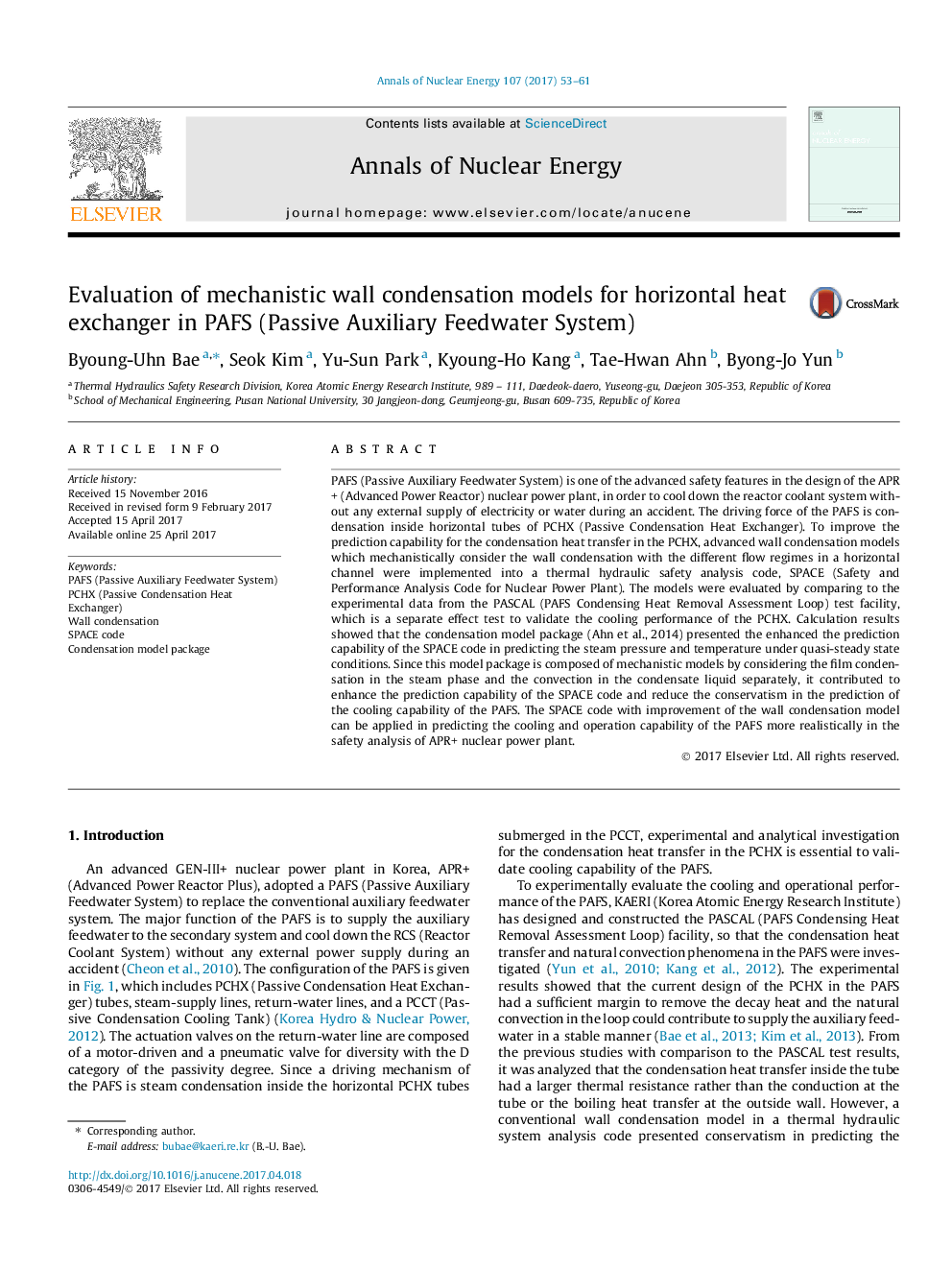| Article ID | Journal | Published Year | Pages | File Type |
|---|---|---|---|---|
| 5475251 | Annals of Nuclear Energy | 2017 | 9 Pages |
Abstract
PAFS (Passive Auxiliary Feedwater System) is one of the advanced safety features in the design of the APR+ (Advanced Power Reactor) nuclear power plant, in order to cool down the reactor coolant system without any external supply of electricity or water during an accident. The driving force of the PAFS is condensation inside horizontal tubes of PCHX (Passive Condensation Heat Exchanger). To improve the prediction capability for the condensation heat transfer in the PCHX, advanced wall condensation models which mechanistically consider the wall condensation with the different flow regimes in a horizontal channel were implemented into a thermal hydraulic safety analysis code, SPACE (Safety and Performance Analysis Code for Nuclear Power Plant). The models were evaluated by comparing to the experimental data from the PASCAL (PAFS Condensing Heat Removal Assessment Loop) test facility, which is a separate effect test to validate the cooling performance of the PCHX. Calculation results showed that the condensation model package (Ahn et al., 2014) presented the enhanced the prediction capability of the SPACE code in predicting the steam pressure and temperature under quasi-steady state conditions. Since this model package is composed of mechanistic models by considering the film condensation in the steam phase and the convection in the condensate liquid separately, it contributed to enhance the prediction capability of the SPACE code and reduce the conservatism in the prediction of the cooling capability of the PAFS. The SPACE code with improvement of the wall condensation model can be applied in predicting the cooling and operation capability of the PAFS more realistically in the safety analysis of APR+ nuclear power plant.
Related Topics
Physical Sciences and Engineering
Energy
Energy Engineering and Power Technology
Authors
Byoung-Uhn Bae, Seok Kim, Yu-Sun Park, Kyoung-Ho Kang, Tae-Hwan Ahn, Byong-Jo Yun,
